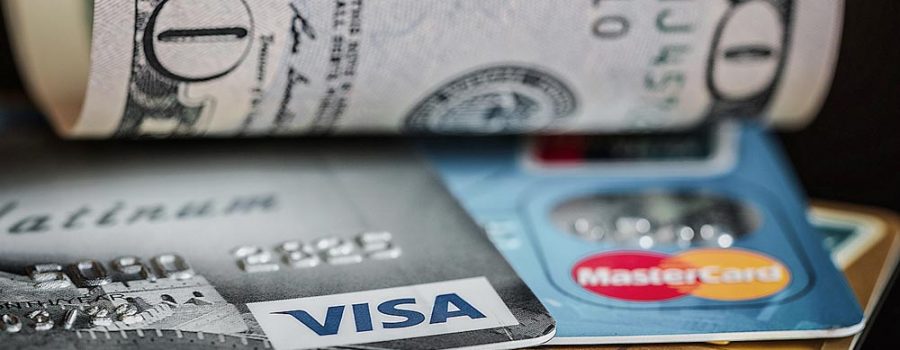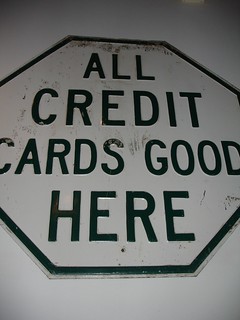Low Credit Credit Cards Defined
Low credit credit cards, known in the industry as “fee harvester” cards are starter credit cards for those trying to establish new credit or re-establish a better credit picture from a low score caused by a damaged track record. For most analysts anyone with a FICO score below 660 is defined as sub prime. People who use these credit cards pay a premium in the form of high interest, high annual fees and a low credit limit. Lenders increased their issuance by 39 percent in the first quarter of 2014 because they are so profitable. They have an average interest rate of 21.1 per cent versus 12.9 per cent for cards issued to those with good credit scores. Things to watch out for include program fees, setup fees, participation fees and annual fees. Cash Advance Fees with their higher Interest and fees are never a good bet.
Interest on cash advances begins to run as of the day of the withdrawal. There will be an extra fee of about 5 percent as well as higher interest charges…up to 36 percent in some cases. Credit cards generally have variable rate interest pegged to the government’s “prime rate.” Late payments can push you into a higher interest rate. Do not buy into any program labelled “credit protection” or “payment protection.” These are nothing more than overpriced insurance policies.
All the information you need to know is contained in an easy to understand format on your statement called “the Schumer box”. This was named after Senator Charles Schumer of New York, a champion of the law mandating easy to understand disclosure of credit card terms.
Low credit credit cards are a step up from secured credit cards which are cards backed by your own cash as security. There are many players in this lucrative field. I will examine some things you should know about 6 of the more visible issuers of these credit cards. Any study of low credit credit cards must start with the 800 pound gorilla…
Capital One
Capital One has absorbed many smaller companies such as its former rival Orchard Bank. Capital One is the 9th largest commercial bank in the US. It is immensely profitable with a net revenue margin of 17.29 percent. One third of its customers have credit scores below 660. It has programs to issue secured credit cards. The Capital One Secured Master Card can be issued with a balance as low as $49.00 or as high as $3,000.00. The annual fee is only $29.00 with an APR of 22.9 per cent. Capital One is the dominant player in low credit credit cards. It also has cards for people on the higher end of the credit spectrum but that’s another story for another time. Those with low credit credit cards can move up to better cards within the Capital One system.
A recent pre-approved Capital One Credit Card application offered: 0 percent APR for 9 months followed by 22.9 percent variable based on Prime rate. The minimum credit line was $300.00 reviewable in 5 months for a credit limit increase. This offer charged no Annual Fee!
As with any other credit card company your FICO score is the dominant factor in their decision as to whether to grant you credit at all. If they do grant you credit and your credit score is in the high 500s to low 600s they will put a credit limit on you of about $300.00-$500.00. Some offers have no annual fee. If they do charge an annual fee it is reasonable at a price tag of $59.00 assessed once a year. Your interest rate is determined chiefly by your credit score. Credit limits and interest rates are reviewed periodically and they may surprise you with a $250.00 bump to your credit limit without assessing any fee after you have proved their trust in you was justified. You can request a review every 6 months if you feel like you have made progress enough to warrant it. With persistent growth you can wind up with a fine all purpose credit card from Capital One with excellent features all around.
There are numerous low credit credit cards on the market. Here is a sampling of what you may expect from a few of these low interest credit cards.
Low Credit Credit Cards
- MyPremiere: Very high interest rates in excess of 30 percent. This company takes its annual fee out on a monthly basis. They may start you as low as $400.00 as your credit limit. They have a nasty little custom of charging a one time fee of 25 percent of any credit limit increase they may grant you after you have earned it. They will charge your annual fee of $8.50-$14.50 per month on each statement. This practice is not good because you will always have a “card with a balance” despite paying in full when the annual fee is added to your next statement.
- Matrix: This one is strictly for starters with a limit of $300.00 minus a $75.00 upfront fee. There are no credit limit increases at all for anyone as of this writing. Matrix, offered by Continental Finance along with other cards called Cerulean and Verve, is the bottom of the barrel. They may approve someone that no one else will approve and give that person the start they need. They use a particularly dirty trick of charging a $12.00 a month “maintenance fee” after 1 year of use. That’s $144.00 extra a year on a card with a $300.00 limit! Users agree to this in the fine print when they get the card. I am questioning the legality of this practice. I’ll report back when the results of this challenge are in. UPDATE: In February, 2015, the Consumer Financial Protection Bureau ordered Continental Finance to refund 2.7 Million dollars to 98,000 customers who were charged illegal fees. A $250,000.00 civil penalty was also assessed. The CFPB found that Continental had violated the 2009 Credit Card Accountability Responsibility Act (CARD Act) which in part bans card companies from charging fees in excess of 25% of the card’s limit in the first year. Refunds averaging $28.00 per customer will be credited or sent by check without any further action by the consumer.
- Credit One. Starts out with a low of about $350.00 for most sub prime credit people. They will give you an increase after a year or so with a small charge for the increase.
- First Savings: Starts out at a low of $350.00 with an increase after a year or so at no extra charge.
- Merrick: They usually start people out at about $500.00. They assess the reasonable annual fee out of each months statement. Credit limit increases are free of charge. You can exceed $1000.00 limit after a year or more of good compliance if they see an improved credit score. I recently saw a Merrick card that had grown to a $1750.00 limit with only a $6.00 a month annual fee. Merrick is the best of the low limit cards I have seen so far. Merrick also offers free monthly FICO scores under FICO’s open access program.
Life After Low Credit Credit Cards
No one wants to have a wallet or purse stuffed with a bunch of low credit credit cards. We are always working towards improving our situation to the point that we can begin to substitute low credit credit cards with real quality credit cards issued by a bank, credit union or major players in the credit card field. This is the only way we can get cards with a credit limit of $5,000.00, $10,000.00, $15,000.00 or more. Perks such as miles and no interest balance transfers are always welcome. When that time comes we can phase out the cards that got us there if they have high annual rates or just leave them open with very limited use so they don’t get closed out for inactivity.
For banks the FICO score is only the start in determining how high your credit limit will be. They will factor in such things as your history with them, your income, your average daily balance, age of account, monthly deposits, bounced checks, employment history and probably a few things they keep to themselves.





